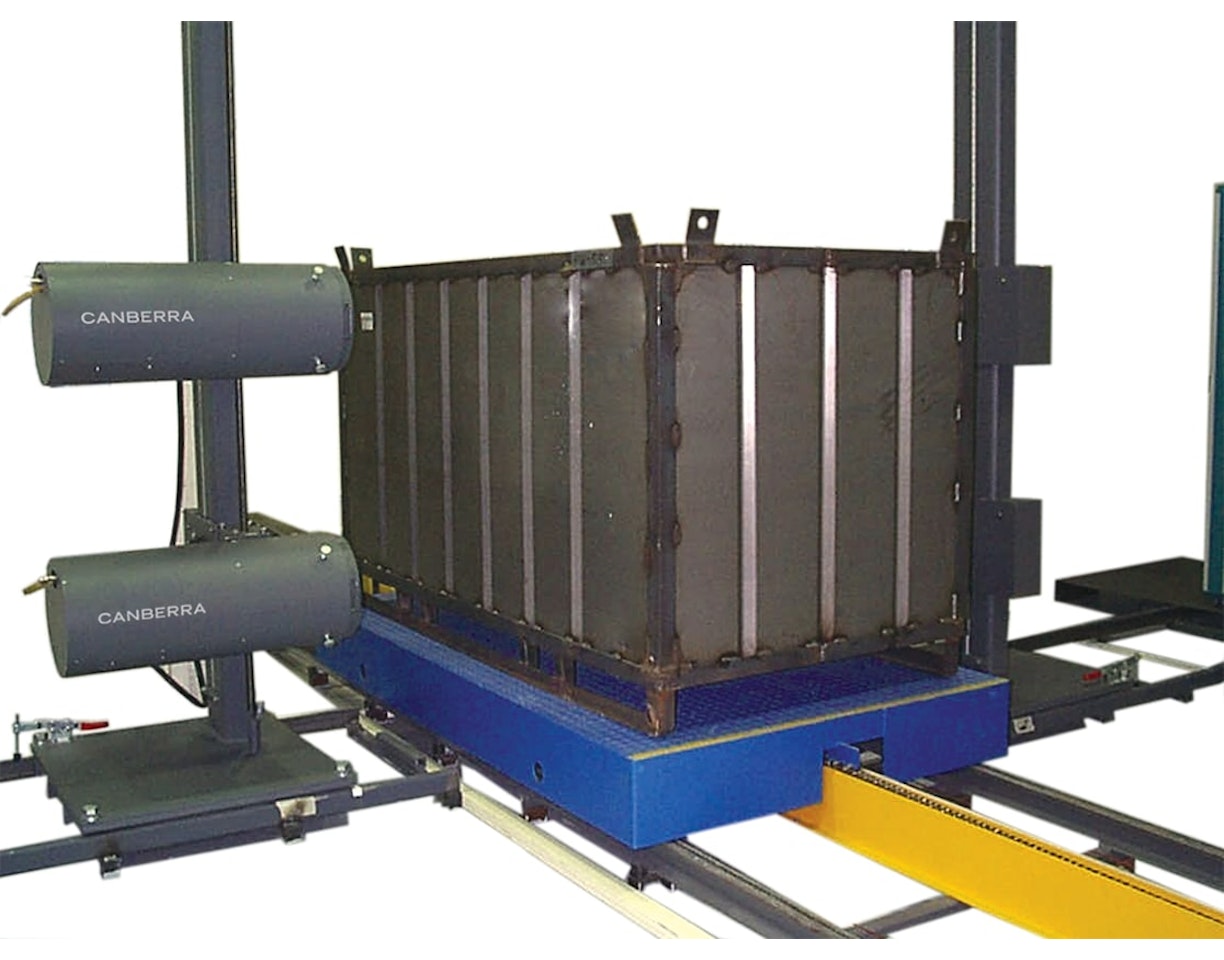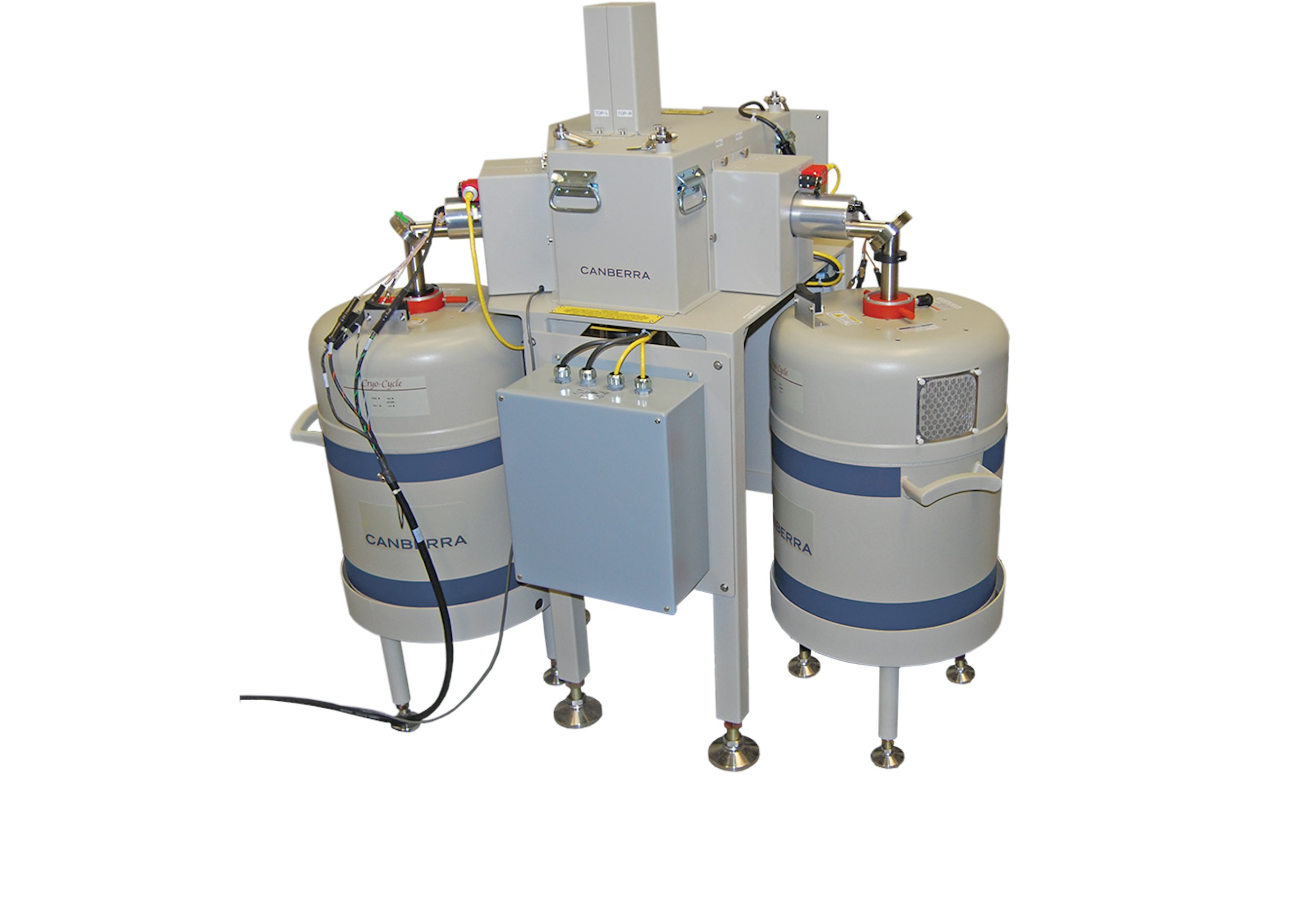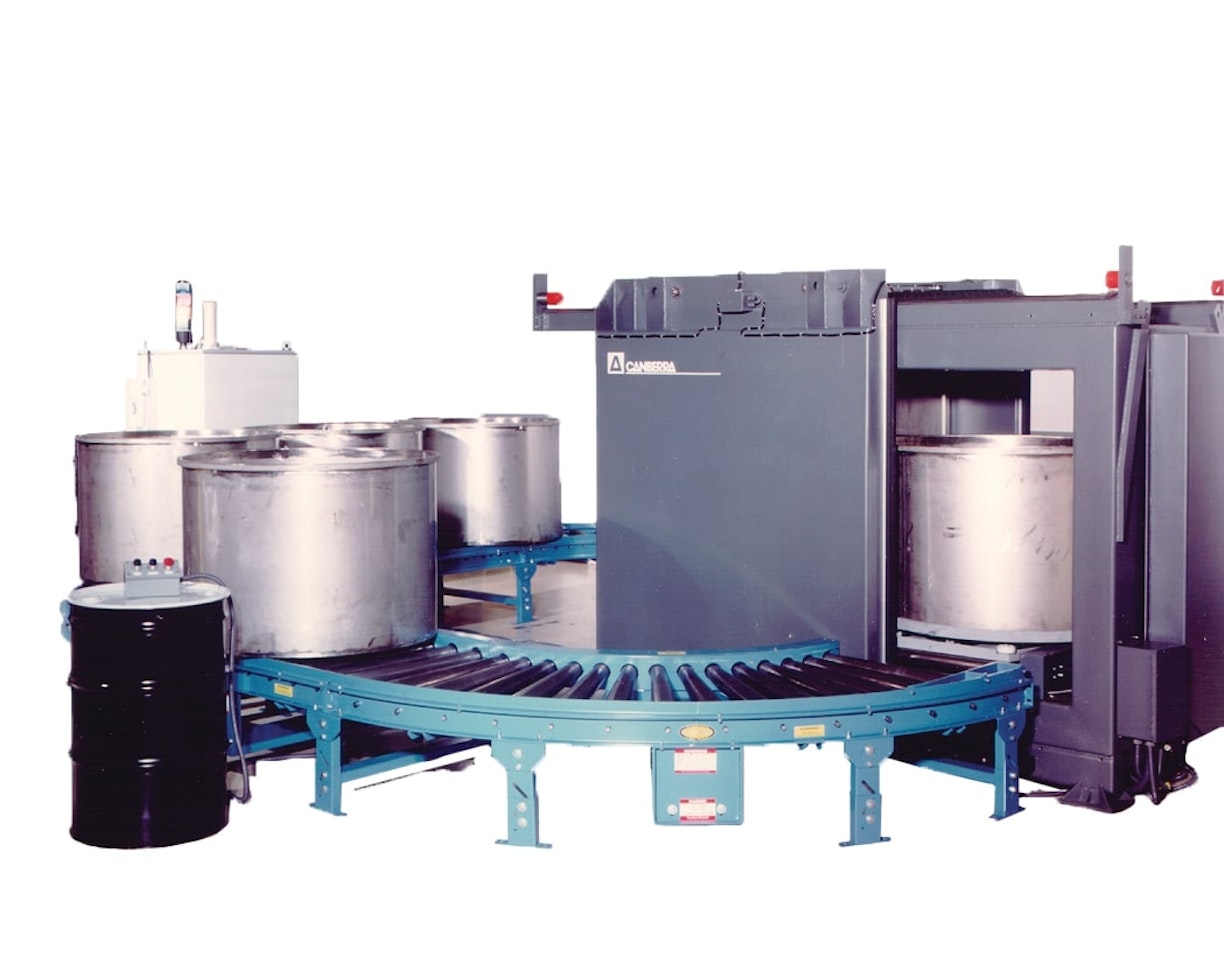Description
The Hybrid K-Edge/XRF Analyzer is designed to identify and quantify several heavy elements in homogeneous liquid or solid samples simultaneously. It has proven to give approximately the same measurement precision as destructive chemical analysis methods, yet is much simpler and faster to use. The instrument was developed at KFK Karlsruhe1, and is available from Mirion under license.
The system consists of a basic K-Edge densitometer (KED) with the additional capability for simultaneous X-ray fluorescence (XRF) analysis of induced X-rays, as shown in Figure 1. The typical configuration incorporates a constant potential X-ray system, two LEGe™ detectors, standard NIM electronics and a computer for data acquisition, analysis and display. The KED and XRF analyses can be run simultaneously or individually on a single sample or on separate samples, depending upon the application and the required accuracy.
KED measurements can be run for single element samples (like Th, U, or Pu) and for dual element pairs such as Th/U and U/Pu. A highly collimated beam from the X-ray tube passes through a sample vial containing about 2 mL of the sample material. At the element-specific K absorption edge energy the attenuation changes abruptly when this element is present in the sample (Figure 2). The energy at which this jump occurs unambiguously defines the element and the height of the jump is a measure of the concentration of the element in the sample.
Another X-ray beam from the same X-ray tube is used for the XRF analysis. This beam stimulates the emission of characteristic K X-rays from the heavy elements in the solution. The intensities of these induced X rays are a measure of their relative concentrations.
The precision obtained with heavy element concentrations in solution of greater then 50 g/L is better then 0.5% at the one sigma level for a counting time of 20 minutes2. For analyses requiring an accuracy of greater than 0.5% spectroscopic glass cells of well-defined path length are recommended as sample vials.
A standalone XRF measurement is the preferred mode for analysis of very dense solid samples or for liquid samples of low concentrations. The XRF analysis using the energetic K X-rays provides a precision of better than 1% for concentrations above 1 g/L, and of 10% at 0.05 g/L. The limit of detection is 0.01 g/L with a counting time of 20 minutes.
Samples containing several heavy elements can be measured in the combined KED/XRF mode. In this mode, the XRF channel determines element ratios and the KED measurement the reference basis for the determination of absolute concentrations. The combined KED/XRF analysis of a U/Pu solution in a concentration ratio of 1/1000 yields a precision for the major element concentration (100 g/L) of 0.1-0.2% and of 0.7% for the precision of the ratio determination.
The Hybrid K-edge method is ideally applicable for nuclear fuel reprocessing plants. The use of the higher energy K X-rays (as compared to L X-rays used by other XRF techniques) makes it possible to irradiate the sample and detect the X-rays through the stainless steel walls of the glovebox. The reduction of the sample volume to a few milliliters and the use of a high power X-ray tube (3 kW) assure a good signal to noise ratio even at the very high gamma backgrounds of the dissolver solutions. The same instrument can also be used for production control.
Its operational simplicity and speed of analysis makes the Hybrid K-Edge/XRF Analyzer the ideal control instrument for accountancy verification laboratories for safeguards applications.




